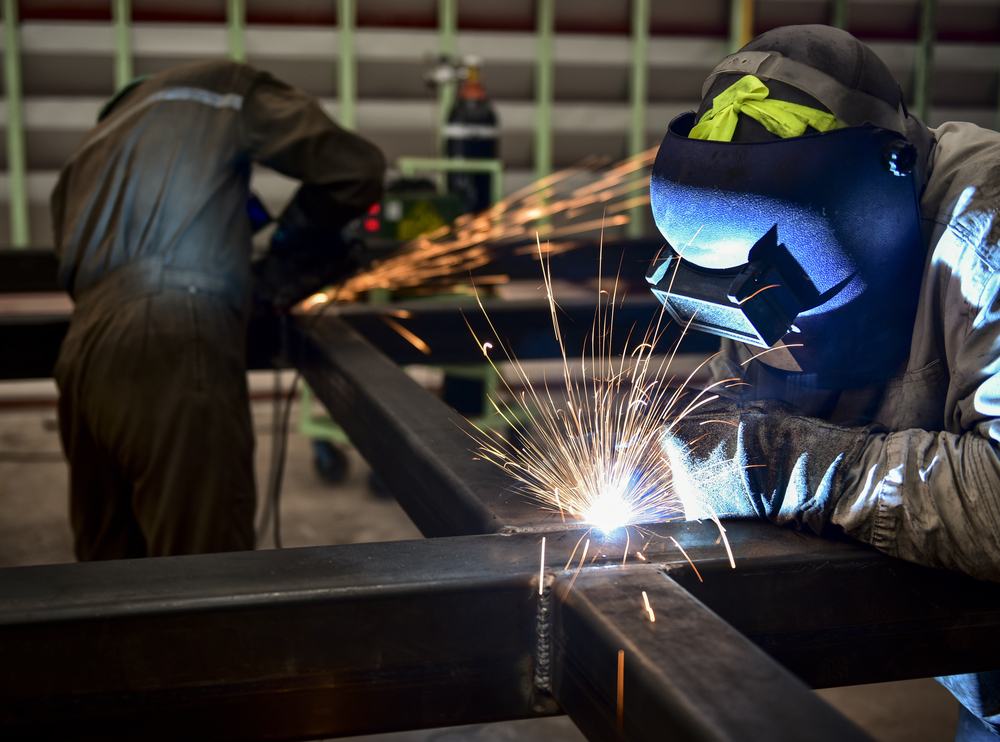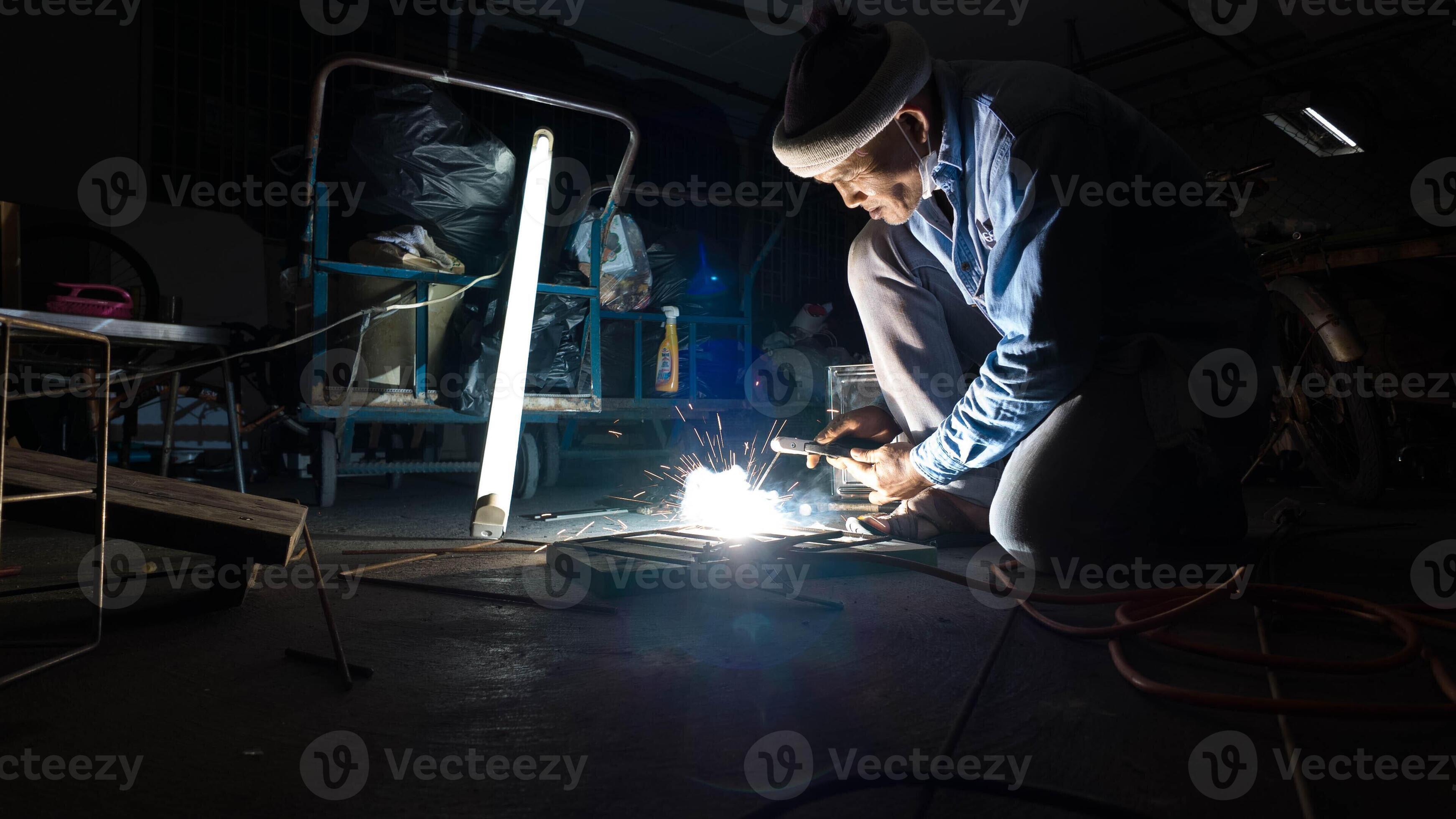All About Welding: Secret Insights Into Techniques and Ideal Practices for Success
Welding includes a selection of strategies, each fit for certain materials and applications. Comprehending these methods, such as GMAW, SMAW, and TIG, is crucial for accomplishing excellent outcomes. Additionally, the appropriate tools and safety and security techniques can not be overlooked. As prep work and fixing play critical functions in the welding procedure, grasping these aspects can substantially boost the high quality of the last product. What are the essential factors that guarantee an effective weld?
Recognizing Different Welding Methods
Welding methods incorporate a range of approaches, each suited to particular applications and materials. Among the most typical methods are Gas Steel Arc Welding (GMAW), Protected Metal Arc Welding (SMAW), and Tungsten Inert Gas Welding (TIG) GMAW, also referred to as MIG welding, is popular for its rate and flexibility, making it suitable for thin materials. SMAW, or stick welding, is preferred for its simplicity and performance in outside environments, specifically with thicker steels. TIG welding provides precision and control, making it ideal for detailed work and non-ferrous steels (Fabrication). Each technique has its one-of-a-kind advantages and considerations, permitting welders to choose the most effective method based upon the job's demands, product type, and desired end results. Comprehending these techniques is vital for successful welding
Vital Welding Devices and Devices
While numerous welding techniques require particular abilities, the best tools and tools are equally necessary for attaining high quality results. Vital welding devices consists of welding machines, which differ relying on the method-- such as MIG, TIG, or stick welding. Safety equipment, including aprons, handwear covers, and helmets, warranties security and convenience during the procedure. Furthermore, clamps and fixtures assist safeguard materials in location, making certain accuracy in welds. Consumables like welding poles, cord, and shielding gas are also important parts that influence the quality of the weld. In addition, devices such as grinders and cutters assist in surface preparation and post-weld finishing, adding to a specialist result. Purchasing high-grade equipment ultimately improves the effectiveness and efficiency of welding projects.
Safety And Security Practices in Welding
Appropriate safety practices are essential in the welding sector to secure workers from prospective dangers. Welders need to use ideal personal safety equipment (PPE), consisting of helmets with correct shading, handwear covers, and flame-resistant garments. Sufficient ventilation is vital to lower direct exposure to dangerous fumes and gases generated during the welding process. Additionally, workers must be learnt the appropriate handling of welding tools to stop accidents. Fire safety and security procedures, such as maintaining flammable products away from the welding location and having fire extinguishers easily available, are required. Regular inspections of tools and workspaces can aid identify prospective dangers before they lead to mishaps. By adhering to these security methods, welders can create a more secure working environment and reduce risks connected with their profession.
Preparing Materials for Welding
Preparing products for welding is an essential action that substantially affects the quality and integrity of the end product (Montana Mobile Welding and Repair Fabrication). Correct preparation includes cleansing the surface areas to remove pollutants such as oil, rust, and dirt, which can compromise the weld. Methods such as grinding, sanding, or using solvents are frequently utilized to accomplish a tidy surface. Additionally, making certain that the materials mesh comfortably is vital; voids can lead to weak welds. It's also crucial to consider the positioning and positioning of the components, as this will affect the convenience of welding and the last end result. Choosing the suitable filler material and making sure compatibility with the base metals is crucial for accomplishing strong, resilient welds.
Tips for Achieving High-Quality Welds
Accomplishing premium welds requires attention to detail and adherence to ideal techniques throughout the welding procedure. Proper joint prep work is crucial, ensuring surface areas are complimentary and clean from impurities. Selecting the suitable filler material and welding method based upon the base metals is essential for suitable bonding. Preserving regular traveling rate and angle while welding can prevent flaws and advertise uniformity. Additionally, regulating heat input is vital; excessive heat can cause bending and damaged joints. Regularly inspecting the welds during the process allows for instant adjustments if required. Employing appropriate post-weld treatments, such as cleansing and tension alleviation, can boost the sturdiness and integrity of the weld, ultimately ensuring a successful end result.
Repairing Typical Welding Issues
Welding usually presents obstacles that can impact the top quality and stability of the end product. Usual problems such as porosity, inconsistent weld beads, and getting too hot can occur, each diesel welder requiring certain troubleshooting strategies. Understanding these issues is important for welders to improve their abilities and accomplish perfect results.
Porosity Troubles Described
Although porosity can often be overlooked, it continues to be an important issue in welding that can endanger the honesty of a completed product. Porosity refers to the presence of tiny gas pockets within the weld grain, which can lead and compromise the joint to early failure. This problem generally occurs from impurities, moisture, or improper shielding gas protection throughout the welding process. To reduce porosity, welders should confirm that the base materials are tidy and completely dry, make use of ideal protecting gases, and preserve consistent welding criteria. Regularly examining the devices and environment can additionally aid identify potential problems prior to they materialize in the weld. Dealing with porosity efficiently is important for accomplishing strong, long lasting welds that fulfill quality requirements.

Inconsistent Weld Beads
Inconsistent weld beads can considerably impact the high quality and toughness of an ended up product. Various variables contribute to this problem, including incorrect travel rate, inaccurate amperage settings, and irregular electrode angles. When the welder moves as well rapidly, a bead may show up narrow and lack penetration, while relocating too slowly can cause extreme buildup. Additionally, utilizing the incorrect amperage can cause either undercutting or too much spatter, both of which compromise weld integrity. The welder's technique, such as irregular torch motion, can also bring about uneven bead look. To reduce these troubles, welders need to concentrate on maintaining steady, regulated movements and guaranteeing correct tools settings to accomplish uniformity in their welds. Uniformity is vital to achieving reliable and solid welds.
Overheating and Bending Issues
Extreme heat throughout the welding procedure can lead to substantial getting too hot and deforming concerns, impacting the structural honesty of the work surface. These problems often materialize as distortion, which can endanger positioning and fit-up, making further assembly challenging. Elements contributing to overheating consist of the selection of welding criteria, such as voltage and travel speed, as well as the kind of product being welded. To minimize these problems, welders need to maintain regular traveling speed and proper warmth input while checking the work surface temperature level. Furthermore, pre-heating or post-weld warmth treatment can aid minimize tensions caused by fast air have a peek here conditioning - Montana Mobile Welding and Repair Fabrication. Normal examination and adherence to ideal techniques are crucial in stopping overheating and making certain the longevity and integrity of bonded structures
Often Asked Questions
What Are the Career Opportunities in the Welding Industry?
The welding market uses diverse job chances, consisting of positions as welders, engineers, educators, and assessors. Specialists can operate in production, construction, aerospace, and automotive markets, profiting from solid demand and affordable incomes in numerous duties.
Just How Can I Boost My Welding Speed Without Giving Up Top Quality?
To boost welding speed without giving up high quality, one should practice effective strategies, keep tools, enhance settings, and improve hand-eye coordination. Normal training and seeking responses can also significantly add to attaining much faster, premium welds.
What Qualifications Are Readily Available for Welders?
Many qualifications exist for welders, including those from the American Welding Society (AWS), the National Center for Construction Education And Learning and Research Study (NCCER), and different industry-specific companies. These credentials improve employability and demonstrate ability efficiency.
Exactly How Does Welding Influence the Properties of Metals?
Welding influences the properties of metals by changing their microstructure, which can lead to modifications in firmness, ductility, and strength. Heat input and air conditioning prices throughout the process significantly affect these material qualities.
Can I Weld Dissimilar Metals With Each Other?
